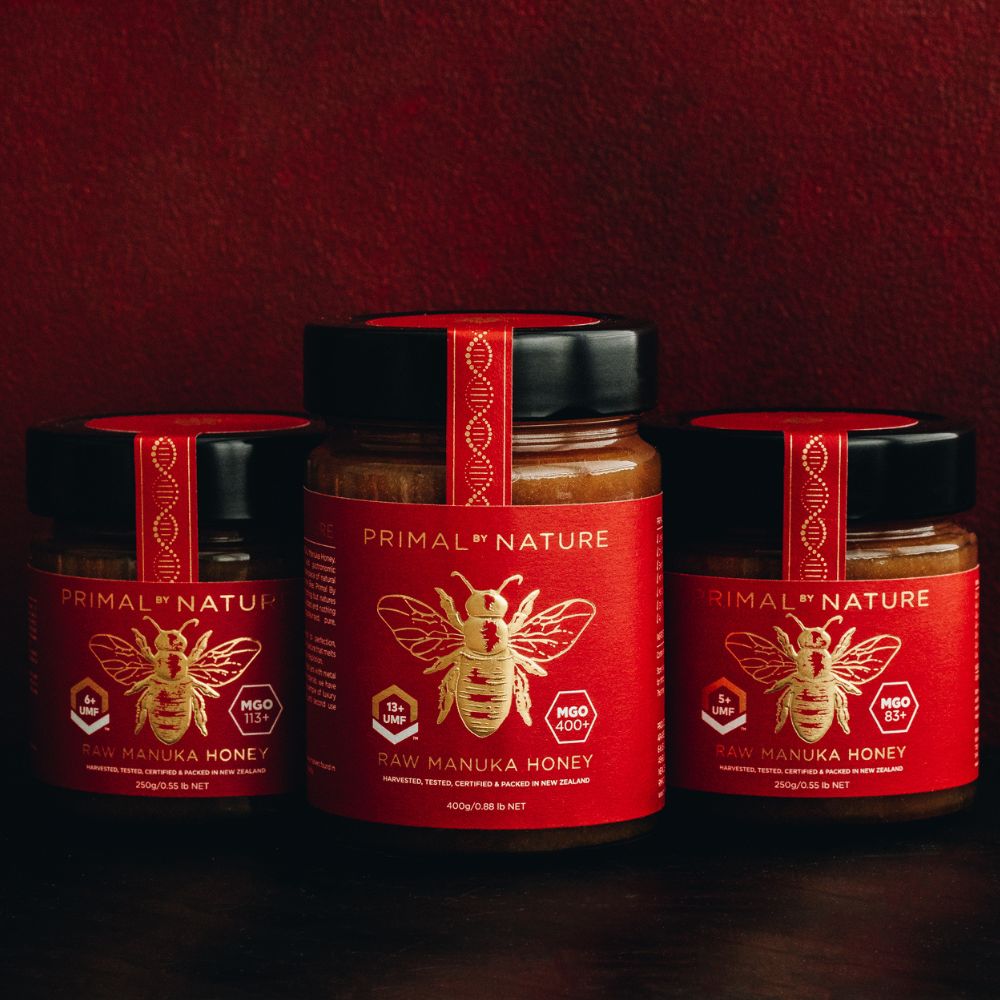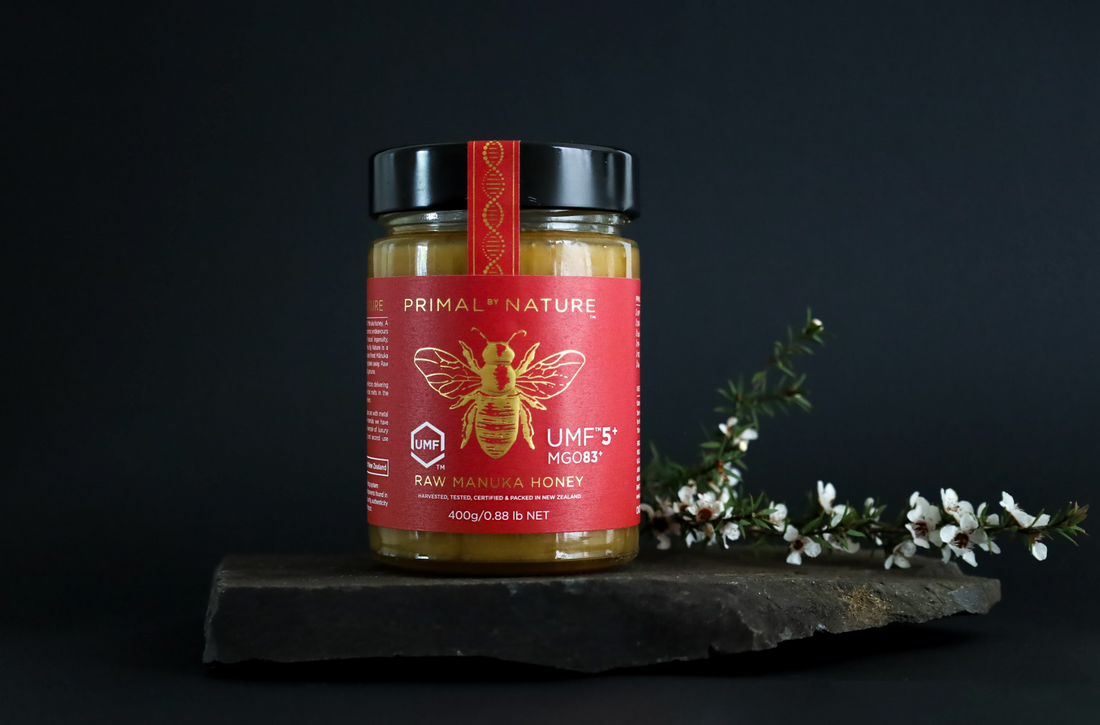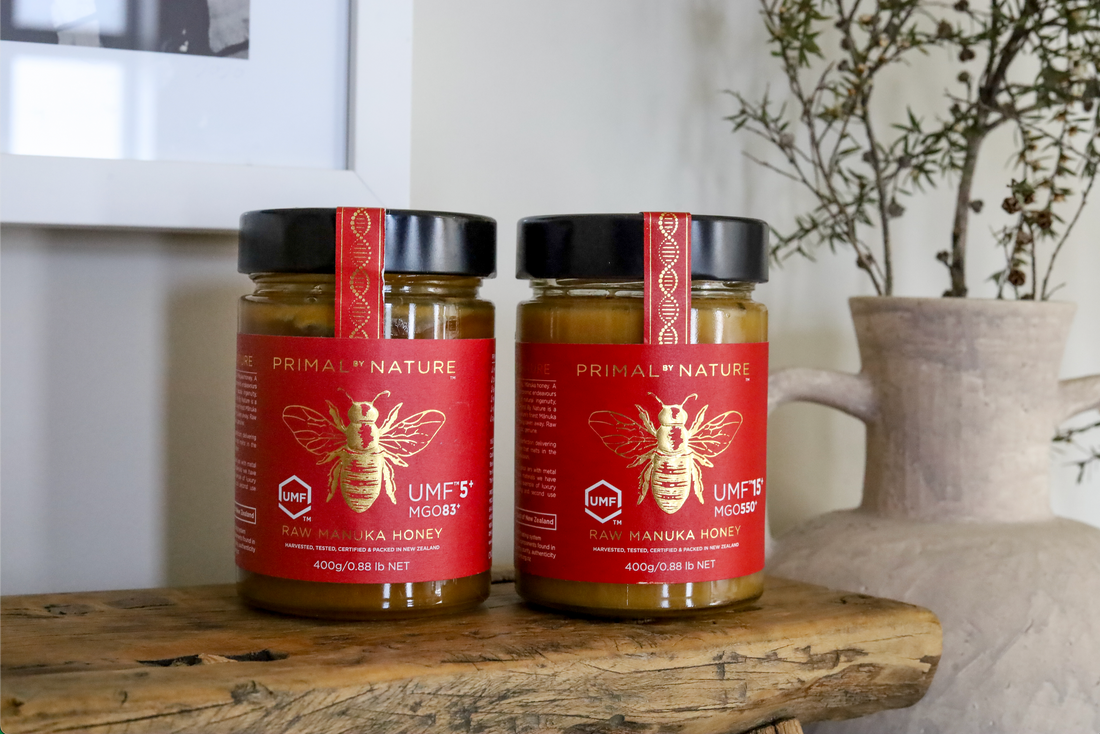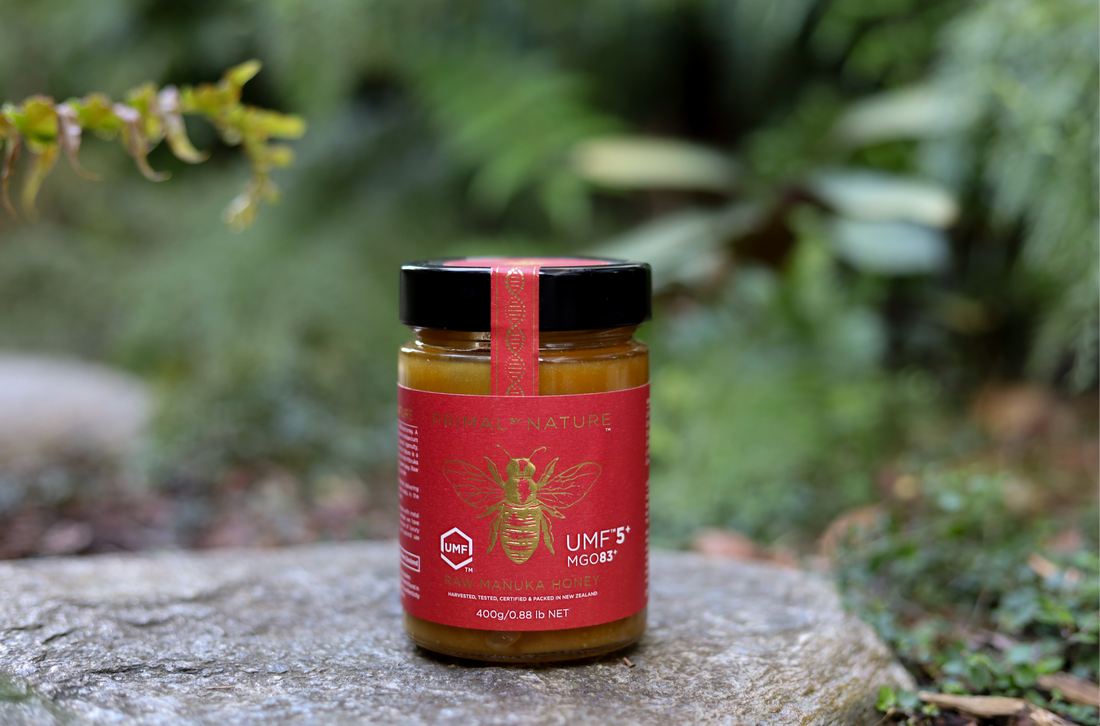Mānuka honey is not just your everyday natural sweetener; this unique honey contains properties and history that place it above nearly all other honey. Apart from being a necessary export for New Zealand, this honey is culturally significant as it is also native to New Zealand.
This blog will discuss this New Zealand honey and outline what makes Mānuka honey native to Aotearoa (NZ). We will also give you the right tips on finding genuine Mānuka honey from New Zealand and how the UMF™ certification is always the best indicator.
Where Does Manuka Honey Come From?
Mānuka honey comes from the native Mānuka tree (Leptospermum scoparium) and exists in some of the most remote parts of New Zealand only. Whilst also a rare plant species, Mānuka features a very narrow window for flowering every year - approximately six to twelve weeks.
Although Mānuka can technically be found throughout New Zealand, the hives must be positioned in dense forests for monofloral Manuka honey to occur. Many bushes are found across the North Island and in certain concentrated regions of northern South Island, where some sites are only accessible by helicopter. It should be no surprise that this truly is a rare honey variety.
Is The Manuka Tree Also a New Zealand Tea Tree?
Occasionally people will refer to Mānuka as New Zealand Tea Tree. This name arose in the very early days of New Zealand during the settlement period with Captain James Cook. Captain Cook was noted for enjoying tea made from the Mānuka flower. Little did he and his crew know that this tree had the capability of creating some of the most enchanting honey the world has ever known.
Although Mānuka is categorised as a tea tree, it also shares lineage with the myrtle family of trees. For all intents and purposes, Mānuka honey is not a tea tree. Mānuka oil is entirely different from tea tree oil which is instead sourced from the melaleuca tree. On a side note, Mānuka oil is also considered an essential oil for many, just like tea tree oil. Naturopathic followers are well aware of the popularity of both oils.
How Do I Know If The Manuka Honey I Buy Is From New Zealand?
When the raw and rugged gold of Primal by Nature’s Mānuka honey is in your hands, how can you be sure this item is from New Zealand? Our comprehensive line of pure Mānuka honey comes with all the necessary certifications to give you the confidence you are buying the real deal.
Firstly, the UMF™ certification on the packaging will indicate that this honey has gone through rigorous testing. As part of the criteria for attaining this certification, the honey must show a substantial concentration of the unique biochemical leptosperin.
Leptosperin is a unique DNA biomarker used by both the Unique Mānuka Factor Honey Association (UMF™HA) and the New Zealand Ministry of Primary Industries. As this chemical is only found in the native Mānuka tree, most verifying organisations will use this as a critical marker for proving genuine Mānuka honey.
Is All Manuka Honey From New Zealand The Same?
While all genuine Mānuka honey will contain leptosperin to some extent, it should be known that higher concentrations of leptosperin signify a rarer variety. For the most basic UMF™ certified honey, UMF™ 5+, there will need to be a leptosperin concentration of at least 100mg/kg.
However, a more mid-range level UMF™ 15+ certification requires leptosperin concentrations to be at least 200mg/kg. It’s essential also to note that several other chemicals contribute to the UMF™ grade of Mānuka honey. Methylglyoxal or MGO is also highly sought-after by Mānuka honey connoisseurs. This unique bioactive chemical has been suggested to contribute to some of Mānuka honey’s proposed antibacterial properties.
Primal by Nature - Sustainably Providing 100% Pure New Zealand Manuka Honey
Primal by Nature can deliver Mānuka honey from the rawest and primal regions in some of the most remote New Zealand locations. We are your one-stop-shop for a sustainable and natural solution. Our Mānuka honey comes in a range of UMF™™ strengths.
All Primal by Nature Mānuka honey arrives at your door in recyclable glass jars regardless of the level of MGO or UMF™™. We believe that our pure New Zealand Mānuka honey must be the best and should be available to consumers in the same eco-friendly packaging.
Primal by Nature eliminates the confusion surrounding Mānuka honey UMF™™ grading systems and standards. As a result, you will be made aware of the different grades and be confident in buying a product that reflects an environmentally conscious brand.
Taking Mānuka honey to the next level, every Primal by Nature glass jar contains a potent primal burst of nature. To taste Mānuka honey of this stature is to embrace nature itself. So take a look at our extensive selection of Mānuka honey products and become one with nature.





